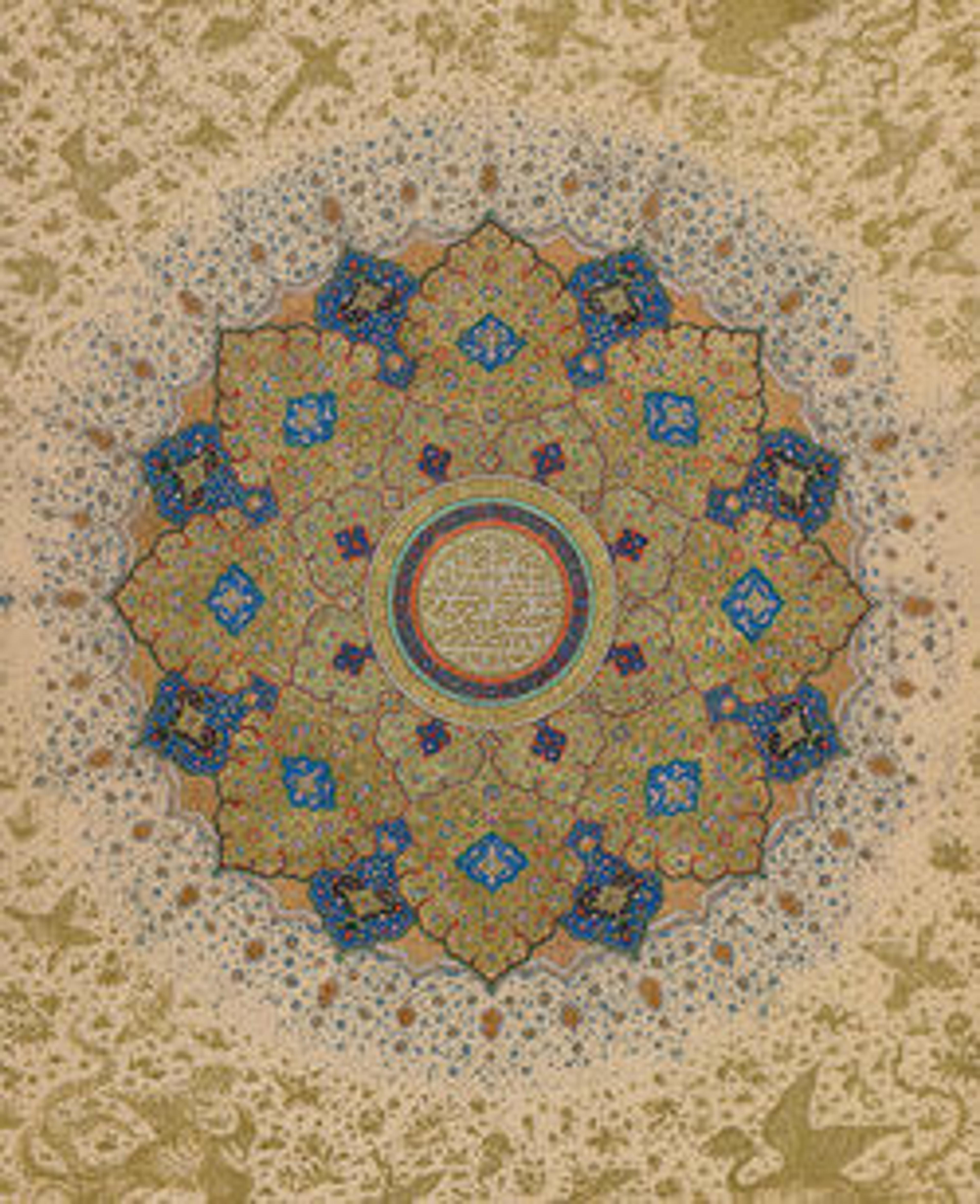Textile Fragment
This fragment from a royal tent, produced during the reign of the Safavid ruler Shah Tahmasp, displays qualities typical of textiles from this period. Densely woven silk threads form the warp and weft of cut and voided velvet, and supplementary metal threads create a shimmering effect. The central peony of the design is surrounded by ogival palmettes, spotted ribbons, lotus flowers, tulips, and rosettes. Owned by the Sangusko family of Poland until 1920, this and other fragments from the tent may have been brought to Eastern Europe in 1683, following the defeat of Ottoman troops in the Battle of Vienna.
Artwork Details
- Title:Textile Fragment
- Date:ca. 1540
- Geography:Attributed to Iran
- Medium:Silk; cut and voided velvet with continuous floats of flat metal thread
- Dimensions:Textile: L. 40 in. (101.6 cm)
W. 17 in. (43.2 cm)
Mount: H. 45 in. (114.3 cm)
W. 22 1/2 in. (57.2 cm)
D. 3/4 in. (1.9 cm) - Classification:Textiles
- Credit Line:Gift of V. Everit Macy, 1927
- Object Number:27.51.2
- Curatorial Department: Islamic Art
More Artwork
Research Resources
The Met provides unparalleled resources for research and welcomes an international community of students and scholars. The Met's Open Access API is where creators and researchers can connect to the The Met collection. Open Access data and public domain images are available for unrestricted commercial and noncommercial use without permission or fee.
To request images under copyright and other restrictions, please use this Image Request form.
Feedback
We continue to research and examine historical and cultural context for objects in The Met collection. If you have comments or questions about this object record, please contact us using the form below. The Museum looks forward to receiving your comments.
